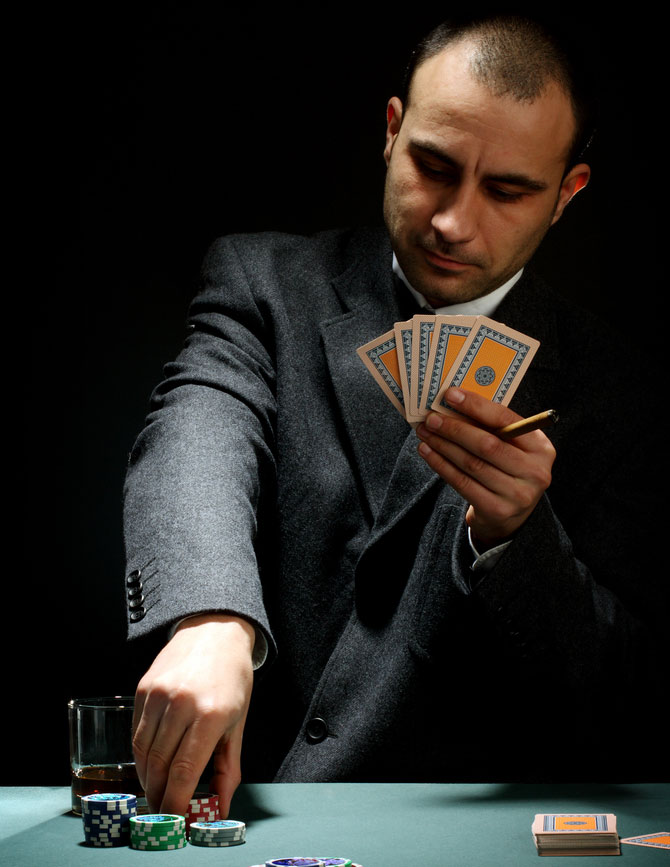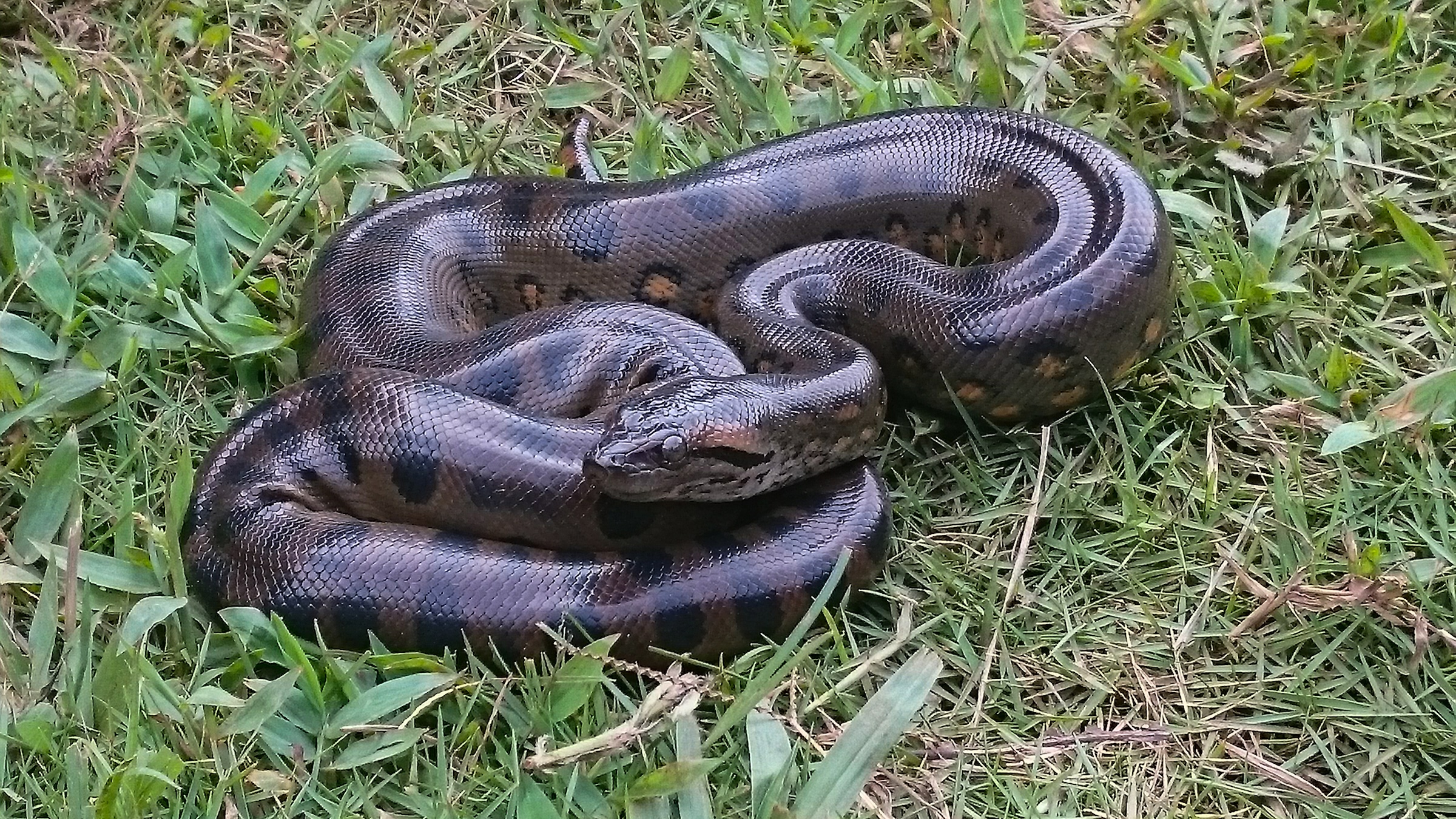Liars: It Takes One to Know One

In the final hand of the 2011 World Series of Poker, Pius Heinz, a 22-year-old German who had honed his poker chops online was matched up against 35-year-old Martin Staszko – a former Hyundai automobile plant foreman. Staszko was in bad shape, having only about a quarter of the chips his younger opponent had, and had been dealt a relatively mediocre hand. Despite this, he decided to risk it all in an attempt to wage a comeback. In effect, he was lying, and Heinz, fortunately blessed with a relatively good hand, called him on his lie. Heinz, having successfully detected his opponents attempt at deceit, won the hand, the tournament, and $8.7 million while Staszko, the failed deceiver, took runner up and had to console himself with just $5.4 million.
Although humans are the only species that plays poker, we are far from the only species that uses deception. And though several million dollars may seem like a high stakes game to us, the stakes for animals which use deception are even higher – often life or death. A frog which successfully fakes its croak to make itself seem bigger will be more likely to succeed in life than a similarly sized one which unsuccessfully fakes its croak. However, the ability to detect deception is just as important as the ability to deceive. A female frog with a talent for detecting deception will be more likely to mate with the actual biggest frog in the pond, rather than the one which only sounds the biggest, ensuring a greater likelihood of success for her genes. And so the evolutionary arms race continues, with liars and lie detectors successively attempting to one-up each other in reproductive fitness.
This is how deception is usually considered. The separate processes of deception and deception detection competing against each other, with the genes associated with each waxing and waning in success relative to the other. However, psychological and neuroscience theories of how lying and lie detection actually work seem to make a different prediction. Specifically these theories suggest that lying and detecting lies both rely on theory of mind, which is the ability to think about what someone else is thinking, and executive processes, an umbrella term which includes abilities like problem solving, attention, reasoning, and planning. Thus, rather than two separate processes competing against each other, these models suggest that improvements in one area will be directly related to improvements in the other. Good liars, in other words, should also make for good lie detectors.
Until now, however, no one has considered looking at whether this idea is true or not. In fact, previous research has failed to show any relationship at all between lie detection ability and any individual differences. That is, there is no evidence indicating which individuals are likely to be good or bad at lie detection. To answer these questions, researchers at the University of London and the University College London had participants play a game they designated the Deceptive Interaction Task.
Participants playing the game are told that the object is to simultaneously be the best at lie detection as well as the most credible. The participants were told that the individuals who score highest in these two areas would each receive a prize of £50. This ensured that all participants were motivated to lie effectively and to attempt to detect lies in others. Participants played in groups of five or six, and on each trial, one participant was chosen randomly to be the sender. The sender was given a card, on which was printed an opinion (for example “Smoking should be banned in all public places”) and an instruction to lie or tell the truth. Participants had privately indicated whether they agreed or disagreed with these opinions prior to the start of the game. After reading their card, the sender then presented their either their actual opinion, or lied about their opinion, and gave some supporting arguments to back up what they had said. The other participants, designated as receivers, then indicated whether they thought the sender was lying or telling the truth.
The results revealed the first ever demonstration of what kinds of people are likely to be good lie detectors: those who are good liars. Interestingly, and in line with what past research has established, participants took significantly less time to start speaking when they were telling the truth than when they were lying. In particular, when lying, participants started speaking after an average of 6.5 seconds. When telling the truth, participants began speaking after an average of 4.6 seconds. The researchers also had IQ and emotional intelligence scores for each of the participants, but neither of these measures were related to lying or lie detection abilities.
Though this research is primarily about deception, it also speaks to a body of work showing that the way in which the brain and mind represent other people is remarkably similar to the way in which the self is represented. For example, when seeing someone else experience emotion, people will respond to tasks as if they were feeling that emotion themselves. Similarly, other work shows that if you twitch your finger, it enhances your ability to perceive someone else twitch their finger in the same way. That deception and deception detection abilities are associated seems to point to a similar conclusion – the representation of self and the representation of other must bear some striking similarities.
Get the world’s most fascinating discoveries delivered straight to your inbox.
Though this study features a more realistic experimental setting than many previous investigations of deception, there are still some shortcomings of the study that deserve to be addressed in future work. First, the requirement of stringent experimental control meant that participants were explicitly instructed when to lie. However, the authors do point out that there are many instances in which individuals are either explicitly instructed to lie (for example, by a boss or parent), or are compelled to lie by the situation. Just think of the last time someone asked you if their new, awful haircut looked nice, and it’s easy to see how we are often forced to lie for one reason or another.
Also, as this is a correlational study, the reason for the association between lying and lie detection abilities remains unknown. While the authors suggest that one likely explanation is that both of these abilities draw on theory of mind and executive functioning, other hypotheses could also be reasonably entertained, and future work should be able to falsify those hypotheses which are not actually true.
This is the first example effectively showing who is likely to be a good liar. Specifically, those who are also good at lie detection. This is an important demonstration of a phenomenon with which our culture is justifiably fascinated. Lying, whether from a politician, an athlete, a poker player, or a frog is an important determinant of who wins and loses. Elections, court cases, card games, and the ability to reproduce all rely on lying and lie detection abilities. With such high stakes, it’s no wonder that we spend so much time trying to figure out who is bluffing and who isn’t. Given these findings, perhaps we can begin to be just a little more accurate.
Are you a scientist who specializes in neuroscience, cognitive science, or psychology? And have you read a recent peer-reviewed paper that you would like to write about? Please send suggestions to Mind Matters editor Gareth Cook, a Pulitzer prize-winning journalist at the Boston Globe. He can be reached at garethideas AT gmail.com or Twitter @garethideas.
This article was provided by ScientificAmerican.com. Follow Scientific American on Twitter @SciAm and @SciamBlogs. Visit ScientificAmerican.com for the latest in science, health and technology news. © 2012 ScientificAmerican.com. All rights reserved.

